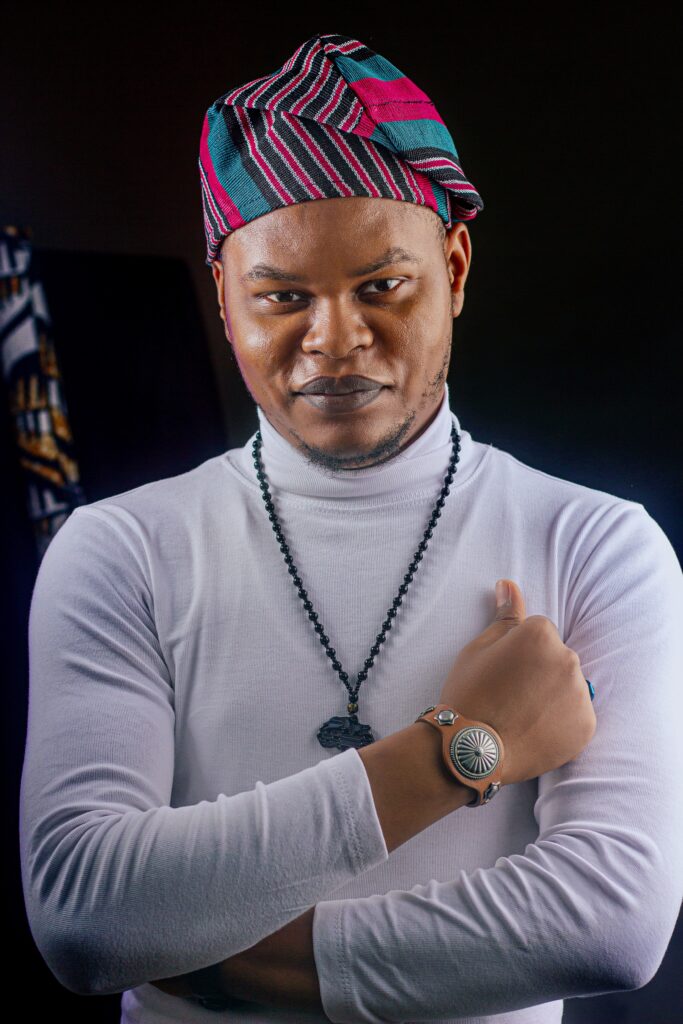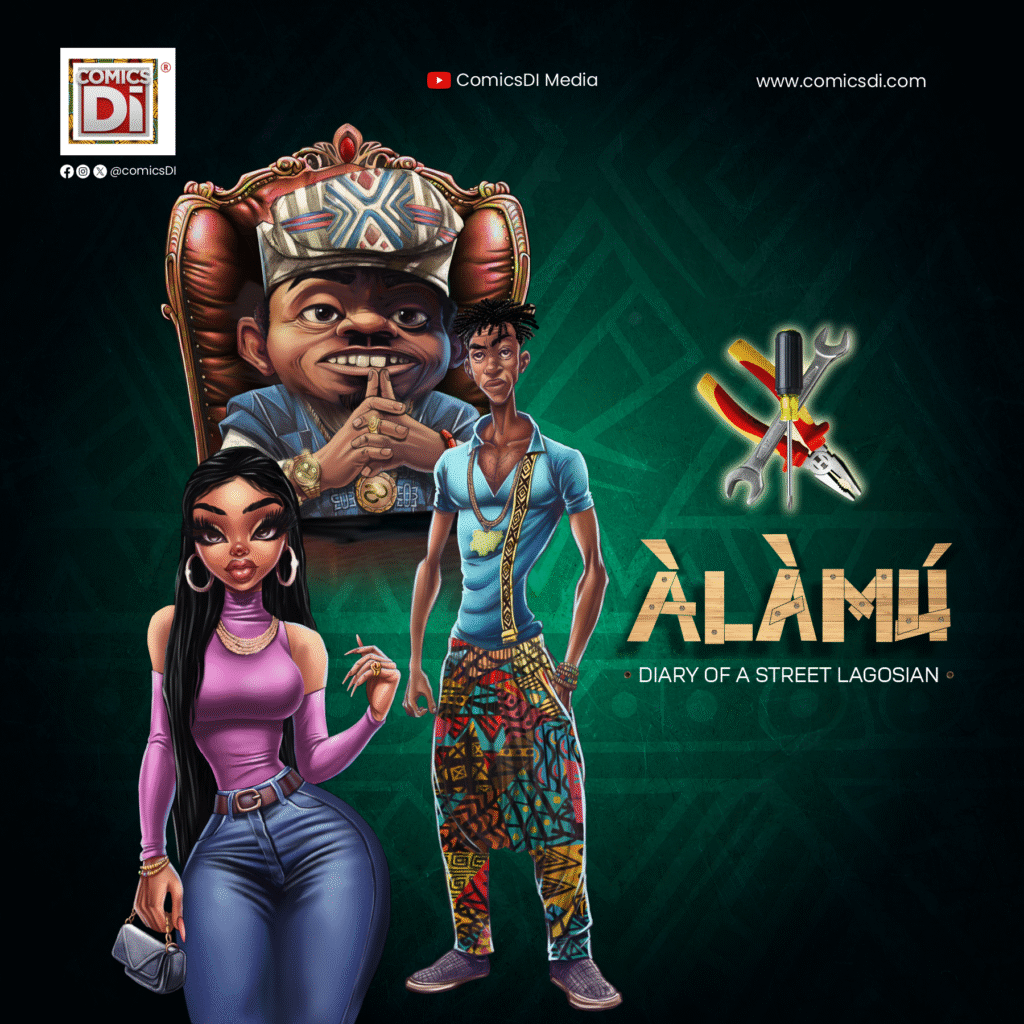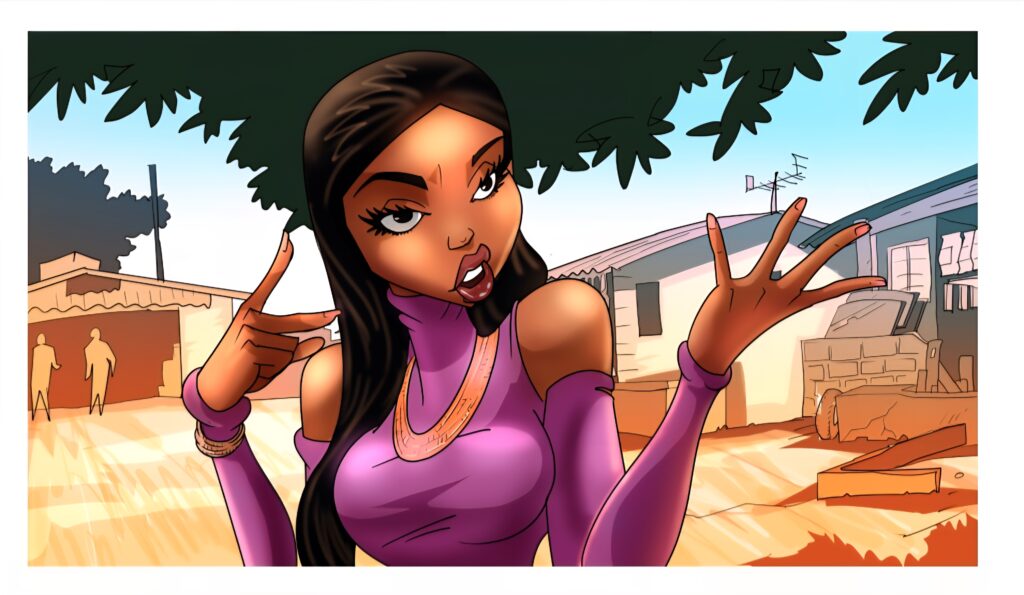From the courtroom to the comic panels, Ayodeji Makinde’s journey is anything but ordinary. A man of many paths, he describes himself as an African storyteller, writer, Afrofuturist, a lawyer by training, and the visionary behind ComicsDI, a Pan-African comic brand.
Interestingly, his story isn’t about leaving law for comics it began the other way around. Ayodeji’s first love was always art, a passion that found its spark in childhood and never let him go.

Can we meet you. Tell us about yourself and your journey from law into comics.
My name is Ayodeji Makinde. I am a man of many paths. To name a few: I am an African storyteller, writer, Afrofuturist, a lawyer by training, and the visionary behind ComicsDI, a Pan-African comic brand.
On the intersection between law and comics, or as you put it, my journey from law into comics, I would say it was actually the other way around: my journey began from comics into law.
My first love was always art and comics. I created my very first comic at the age of eleven, in primary five, which should be around 1994, and carried that passion with relentless zeal into my secondary school years.
My dream then was to study Fine Art at the university, to give full expression to this burning passion. Sadly, the secondary school I attended did not offer Fine Arts as a subject.
This denied me the foundation to be groomed in that field, and it also sabotaged my opportunity to sit for JAMB with Fine Art as my chosen course of study. With no alternative, I fell back on my second love – law.
Even during my university years, while attending evening study sessions, I often found myself drawn irresistibly to the Fine Art studio.
There, I would stand before the mighty sculptures and carvings, savouring the genius of their creativity. Something within them continually reached out to me – an unexplainable connection, a silent calling.
With time, that “something” found its full expression in me, and today, it lives on in my journey as a comic creator.
Why motion comics, and why now? At a time when many creators are moving fully into animation, what made you choose the motion comic format for THE ALAMU: Diary of a Street Lagosian?
Why Motion comics? When you scan through different storytelling mediums – music, documentaries, movies, comics, animations, poetry, stage plays, speculative fiction- you’ll agree that, in the end, what matters isn’t the story itself but how it’s told: the perspective it’s told from, and the medium it’s told through. The medium elevates the storytelling experience to an entirely new level.
In my restless search for something different, I stumbled upon a medium that has existed since the 1960s but never quite broke into mainstream popularity, perhaps overshadowed by the wonders of 2D animation and beyond. Some may consider it obsolete. I beg to differ.
Motion Comics is a unique fusion of traditional comic book storytelling with elements of animation. However, to truly harness its power, certain essentials must be in place: subtle animation, compelling voice acting, immersive sound effects, and atmospheric music.
When combined, they deliver a cinematic experience while preserving the original comic art’s integrity. While animation seems to be the next revolution of creativity, I strongly believe every medium has its place as a medium of expression, even animation did not just emerge today, it has been around since the 1800s, and with the evolution of technology continued to improve.
The uniqueness of this medium seems to be fading, both in Africa and the Western world. I am strongly convinced it is time to bring it back.
On what made me choose the motion comic format for the series, well, we’ve got to understand that this is drama, it needs a certain level of energy in its expression, which can only be achieved through an innovative medium like motion comics.
What inspired THE ALAMU motion comic? Can you share the creative spark behind this project and why you felt this was the right story to bring to life in this format?
This work is my love letter to the Naija masses in the midst of excruciating economic inflation. The Naija spirit never gives up! It is resilient, tough, and rugged regardless of economic hardship.
On the creative spark behind the project: When I went to the United Kingdom, I observed a striking difference between their auto-mechanic repair culture and ours. Over there, the culture isn’t as intense as it is in Nigeria.
Often, when a car develops certain faults, rather than seeking repairs, people simply opt to purchase another vehicle.
On the flip side, in Nigeria, our auto mechanics can repair virtually any fault in an automobile. Out of necessity, we have built an entire culture of innovation, resilience, and survival around our auto-mechanic ecosystem.
When I witnessed this contrast, I realised there was a story waiting to be told. A story about ingenuity. A story about creativity born from survival. And I knew someone needed to tell it and tell it well.
Who exactly is Alamu? Tell us about the character at the center of this series. What does he represent, and why do you think audiences will connect with him?
Alamu is the protagonist of the story, an opinionated and street-wise hustler. In fact, he is a metaphor for the Nigerian masses, a metaphor for countless Nigerian and African youths navigating the bends and curves of a rapidly changing and unpredictable future due to a challenging economic terrain.
So, when we were developing his character design, I envisioned a caricature whose exaggeratedly lean frame would embody the raw, unfiltered hustle of the streets.
His physique needed to speak of resilience; an anatomy that mirrors the doggedness required to rise above environmental limitations. Connecting with his character will be the easiest thing for the audience, as challenges are a harsh reality of life.

The beginning of the Alamu Series. Why did you start the Alamu series, and how does it differ from your previous works at DI Comics?
I never planned to start the Alamu series, even though the story was stuck somewhere in my head. A close friend asked us to collaborate on creating engaging content for YouTube. At the time, I had just finished a capital-intensive project.
I was reluctant at first. I later got to work, put together a team of creatives to handle the project. I shared the cost implications with my friend, but he never got back.
I moved on until the team I put together came back and told me this story I shared with them cannot just go like that, it was a goldmine.
I was moved by their faith in the project. I went back to the drawing board to fully develop the story.
On how it is different from my previous works in ComicsDI, well, this will be the first-ever urban drama comic I will be working on, more like treading unfamiliar terrain. But then, I always try to put in my best.

A prolific creator. You’ve become one of the most consistent Nigerian comic publishers. How many titles has DI Comics released so far, and what drives that level of output?
“For me, consistency is a matter of perspective. I value depth and quality over sheer quantity; this is a personal philosophy I live by.”
We created Futurology, a phenomenal motivational comic strip that went across schools in Ibadan, Oyo State, like wildfire. It impacted countless students, and eventually got me a priceless audience with the iconic Nigerian motivational speaker, Mr Fela Durotoye. This was followed by Iyanda. Then Njeri, an afro-fantasy classic.
After this came Duro, a short mythological work dedicated to the memory of the famous Professor of African Literature, “Professor Pius Adesanmi,” former Director of the Institute of African Studies (IAS) at Carleton University in Ottawa, Canada.
This earned us a royal endorsement from one of the most powerful custodians of culture in Yoruba Land, His Imperial Majesty, Oba Adeyeye Enitan Ogunwusi Ojaja II, the Ooni of Ife.
It was later presented to Nobel Laureate Prof Wole Soyinka, and exhibited by Dr. James Yeku, Assistant Professor of African Digital Humanities, University of Kansas, Texas, USA.
Lastly, is “Lagelu, the Kingdom on Four Hills” an Afrofuturistic masterpiece which was featured on the BBC and Forbes in 2020, and a documentary, “Black to the Future” by DW, Germany. On the project, I also got to work with the legendary Black American Comic Creator “Mshindo Kuumba,” regarded as a walking institution of Afrofuturism.
Revisiting older titles. What’s the future of fan-favourites like Lagelu and Njeri? Do you plan to continue them, reimagine them, or let them remain classics?
“Njeri was abandoned years ago due to funding challenges. Back in 2018, I reached out to a highly successful Nigerian creator in the U.S, someone who had run multiple successful Kickstarter campaigns, to guide me through the crowdfunding process. Unfortunately, I never got a response.
Still, one of the veterans in the industry who worked on the project and read the script continues to remind me, even today, that Njeri was among my best works. Perhaps he’s right. But at this point, I’m not certain I want to return to it, other projects have since taken centre stage.”
Lagelu is very much on the table. The graphic novel is complete, and we are working on getting the best channel for global distribution, as we believe this is an authentic African story the world needs to see. It’s a trilogy: Book One- Nightfall, Book Two- The Tempest, Book Three- The Agbako Protocol. We are still on Book One, so there is so much to come.
The state of the Nigerian comic industry. How do you see the industry right now? Are we moving forward, standing still, or losing ground compared to other creative industries in Nigeria?
This is my personal take, there is a generational shift, a new breed of Nigerian Comic Creators is rising. I am not sure what kind of legacy has been passed down, but this new generation seems to be trying hard to find direction, to find their footing; they need help.
Why haven’t Nigerian comic creators “hit gold” yet? In your view, what are the biggest obstacles preventing Nigerian comics from achieving mainstream or commercial success?
It’s easy to blame the economy, but I believe that’s a cheap excuse to avoid confronting the real problems. What we truly lack is infrastructure and structure. While many have called for a more structured industry, I believe what would work best is a hybrid model, not a rigid “governing authority” (which risks drowning in bureaucracy), but a structured ecosystem body that combines advocacy, funding support, and community building.
This could take the form of a guild or unifying voice for Nigerian comic creators, an entity that advocates for IP rights protection, standardises practices (contracts, royalties, etc), and builds a sustainable foundation for the industry. Comics are not child’s play. Comics are art. Comics are an expression of culture. Comics are entertainment. They deserve far more recognition and support than they currently receive in Nigeria.
A guild could leverage its collective voice to push for funding opportunities for indie creators and publishers. For example, the Tony Elumelu Storytellers Fund by Africa No Filter already supports emerging storytellers reshaping African narratives. With advocacy, Nigerian indie comic creators and publishers can be included. Agencies like SMEDAN (Small and Medium Enterprises Development Agency of Nigeria) currently have no funding provisions for arts and comics. When I visited their headquarters in Abuja a few years ago, they told me that point-blank. With a united voice, we can demand change. The Ministry for Art and Culture can also be lobbied to provide meaningful support for serious creatives, as can the Bank of Industry (BOI). The BOI has the Nolly Fund to boost the Creative Media Business, which supports filmmakers/producers, with a guild, they could be lobbied to provide funding opportunities for serious-minded Nigerian Comic Creators.
There is money in this country, “big money,” and there are unexplored opportunities to support our own. What we need is the right direction, the right strategy, and above all, a united voice.
Consider this: According to Grand View Research, the U.S. comic market was valued at USD 1.23 billion in 2024 and is projected to grow at a CAGR of 10.1% from 2025 to 2030. Comics are mainstream there, supported by strong structures that drive growth. This is a glimpse of the immense potential waiting to be unleashed in our own industry, if only we organise, advocate, and build the structures to sustain it.
The “Japa” question. Do you think comic creators need to leave Nigeria to find success, or is there still a path to building sustainable careers right here at home?
I will not lie, it’s harder at home for comic creators and creatives, very hard. From my exposition above, it is still possible to build sustainable careers back home, but it takes work and rugged focus coupled with time.
Looking ahead. What’s next for Alamu and for DI Comics? Should we expect more motion comics, full animation, or entirely new directions from you?
We have barely just scratched the surface. We haven’t even touched the ComicsDI Universe. There is so much to unpack.
Closing Thought:
Ayodeji Makinde’s journey reminds us that passion has a way of finding its path, no matter the detours life may place in front of it.
From sketching comics as a young boy to navigating the rigors of law, and finally embracing his true calling as a storyteller, his story is one of resilience, vision, and the unyielding power of creativity.
As he continues to shape ComicsDI into a Pan-African force, Ayodeji stands as proof that the future of African storytelling is not only bright but unstoppable.